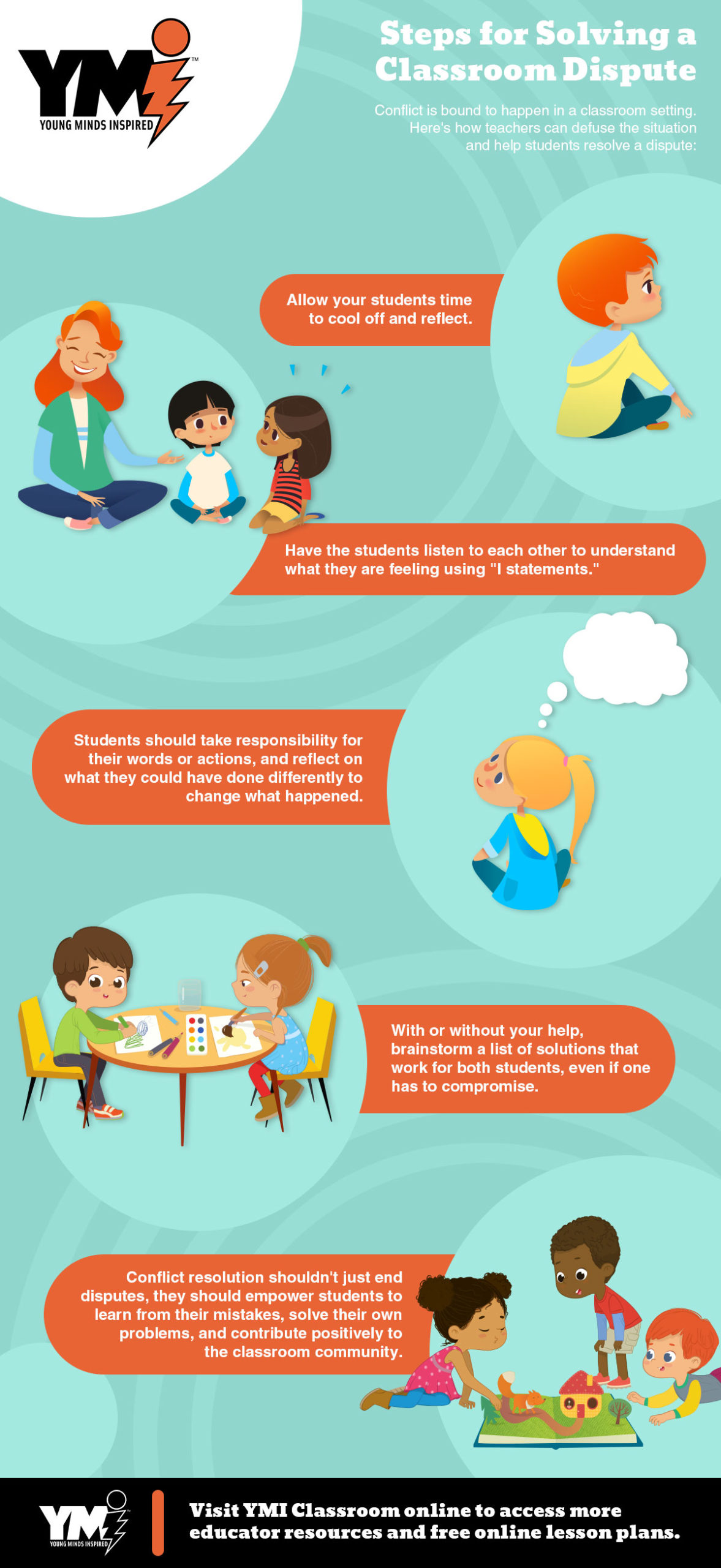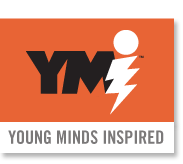Conflict is virtually unavoidable. When you have a group of students that meet and interact with each other on a regular basis, most likely every day, then it is just bound to happen. Even seemingly small disputes can negatively impact the classroom environment and may even interfere with long-term relationships. Fortunately, there are lots of approaches to resolving conflict between your students that keep stress levels down and are actually effective in putting out little fires. Ultimately, the way that conflict resolution is approached will help establish a classroom culture that values community, which is vital for students no matter the grade level.
Below, we will discuss a few methods of handling conflict resolution that prioritizes reconciliation and helping students understand their actions and the actions of others. For access to free teaching resources online, all you need to do is navigate through our site. Teachers are always invited to join the YMI Educator Network to receive even more resources like teaching kits, DVDs, posters, and so much more.
Model the behavior you want to see
One of the best ways to handle conflict is to limit the chances of it happening in the first place. You can do this by stopping it before it even takes place by walking the walk and talking the talk. Treat your students with the respect they deserve and the respect that you expect them to give each other. Encourage your students to think of constructive ways to communicate with other students or express frustration.
Another way to avoid conflict from arising is by giving your students the tools they need to find resolutions themselves.
- Teach students the skills they need to work with partners or in groups. This includes the importance of communicating needs, setting goals, and what to do if something goes wrong.
- Encourage students to role-play situations that require empathy, communication, and problem-solving.
- Help students see how their actions impact others, both positively and negatively.
- Teach students your process for resolving classroom conflicts before any issues come up. This way, students are prepared to take an active role in resolving their own problems.
Remember that conflicts often arise from a combination of fear, anxiety, or frustration. Helping students learn to recognize these emotional triggers, especially if you are dealing with younger students, helps them manage their emotions in healthy ways, like movement or reflection.
Have a place to problem-solve together
If and when conflicts do arise, whatever you do, avoid solving the issue in front of the whole class. Putting the spotlight on students in front of their peers will make them feel even more uncomfortable and vulnerable than they did before, and will likely make the problem worse. Plus, it will make them feel like you don’t have their backs, which may really hurt the classroom dynamic and environment.
Already have a plan in place for problem-solving
Before you anticipate needing it, better yet, at the beginning of the school year, provide students with the opportunity to resolve their issues through a process similar to the one below. This creates a teachable moment by helping students acknowledge the situation, propose resolutions, and find closure. A simple plan for helping students overcome conflict by school psychologist, Laura Driscoll, is outlined below:
- Give students a chance to cool off and reflect on their feelings. If the conflict arises during class and you are not able to discuss the situation with the students yet, you can still provide them with a quiet space to calm down and focus on some reflection questions.
- At an appropriate time, bring the students together, and with your guidance, ask them to share their feelings about the situation. This is a difficult step, so create some support by asking them to use “I-statements” to discuss their feelings and actions. Ask the students to truly listen to each other and try to understand the other student’s perspective.
- Once the students have shared their perspectives, then provide them with solution options or encourage them to create resolutions themselves. This depends on their maturity level and comfort level, but both students should feel comfortable with the solution, even if some compromise is required.

Avoid ignoring problems
You may not be aware of every single conflict that arises between your students, as some may mostly exist outside of the classroom, but it is important that you don’t ignore a problem if you are aware of it. As aggravating and time-consuming as handling conflict resolution is, dealing with problems swiftly and decisively will benefit not only the students involved but your whole classroom community. This is especially important if you notice signs of bullying, which can be emotionally disastrous for the student who is on the receiving end.
Always stay neutral
Although it may be tempting, it is very important not to take sides when you are dealing with conflict resolution. You need to be on the sides of both students, setting the same standards of behavior in every student in your class to set the tone of equity in your classroom. In addition to staying neutral, you also need to stay calm when working through problems with your students. It can be easy to get frustrated or angry when dealing with problems, but remember that you are supposed to be leading by example.
Final Thoughts
Being a teacher has never been an easy job, especially when part of your job is more or less becoming a parent to some of the students in your class. Through our free online teaching resources, you can interact with other teachers and seek advice on a number of interests. Gain access to all of this and more by browning our resources. You can always join the YMI Educator Network to access even more tools, like teaching kits, DVDs, activity sheets, and more free teaching resources.
